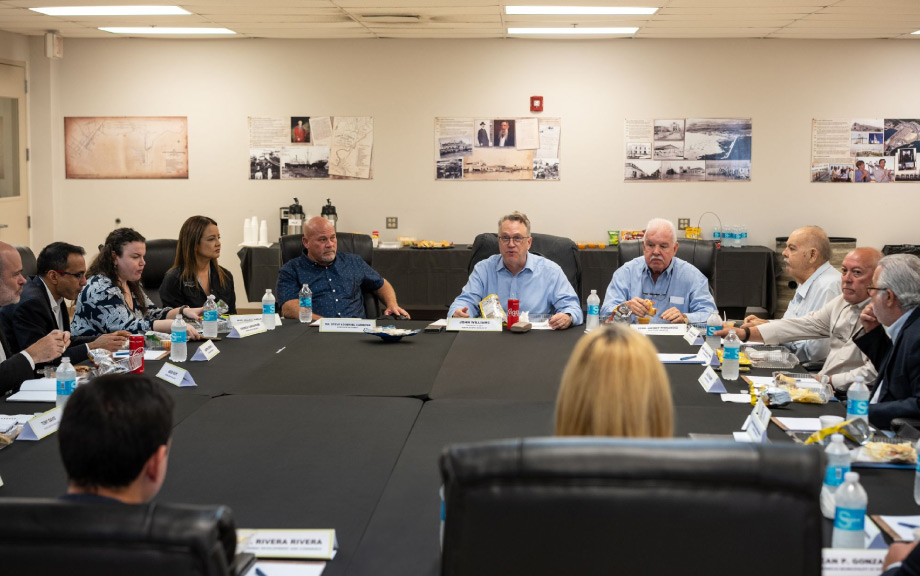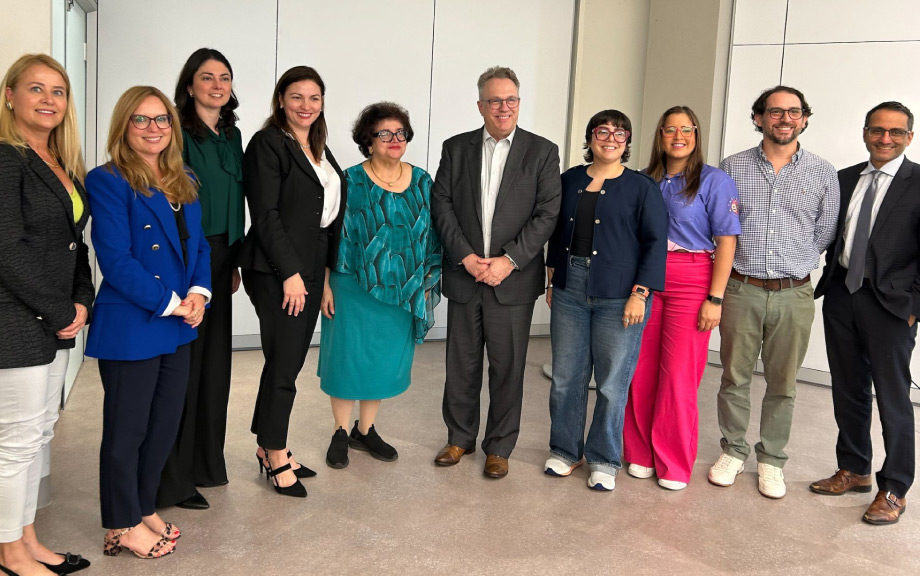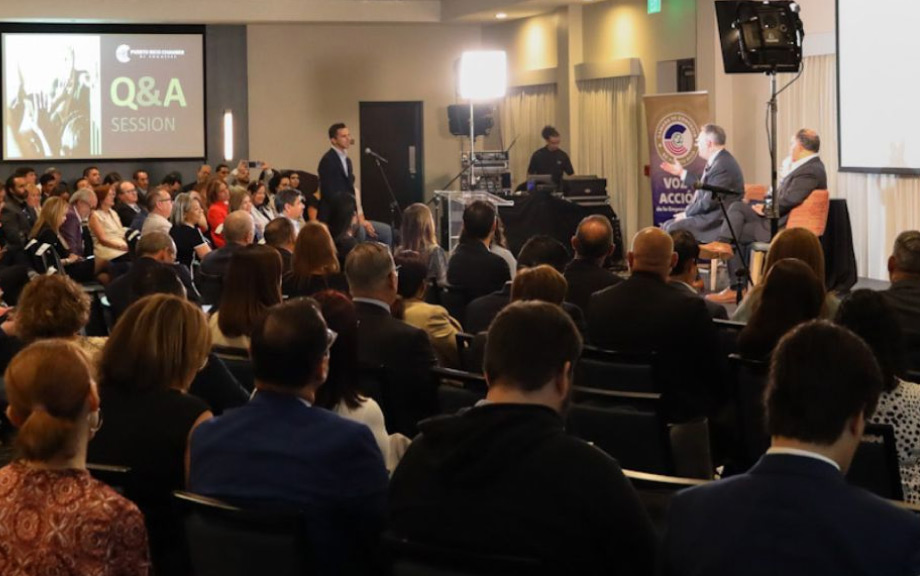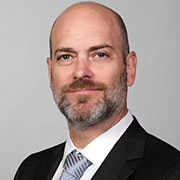
Growth, uncertainty, and opportunity were the recurring themes during an April visit to Puerto Rico by New York Fed President John C. Williams. This regional visit—part of the New York Fed’s ongoing efforts to assess economic conditions across the Federal Reserve’s Second District—gave President Williams an opportunity to engage directly on issues specific to the Island.
After nearly two decades of economic decline—punctuated by bankruptcy and debt restructuring, population loss, and a series of devastating natural disasters—Puerto Rico’s economy appears to have experienced a significant turnaround. Puerto Rico’s post-pandemic economic rebound has been broad-based, with employment in nearly every sector now above pre-pandemic levels and population numbers stabilized.
Over the course of two days, President Williams and a team from the New York Fed visited the cities of Ponce and San Juan, meeting with stakeholders from government, business, education, tourism, community development, and entrepreneurship to better understand how the Island’s 3.2 million residents are experiencing the economy.
With about 2 million residents, the San Juan metro area is Puerto Rico’s commercial, financial, and tourism hub. Ponce is part of the Island’s second-largest metro area, with a population of 266,000. Despite higher poverty and unemployment rates, Ponce appears poised for further economic recovery thanks to significant investments in its port, tourism, and manufacturing.
This is some of what we heard during the visit:
Growth in Tourism, Manufacturing, Entrepreneurship, and Nonprofits
Puerto Rico’s economic rebound has been driven in large part by an influx of reconstruction funds, tax incentives, and private investment. Tourism has grown year-over-year for the past four years. And there are significant developments under construction across the Island to take advantage of increased visitors from the mainland.
Long a manufacturing hub, especially in the pharmaceutical and medical device industries, new large-scale investments by U.S. and multinational manufacturers are being built or planned. Entrepreneurship has also experienced a surge thanks to the development of a mature and dynamic support ecosystem, which includes business incubators, manufacturing micro-loans, and small business grants. By one participant’s calculations, more than 20,000 entrepreneurs have received help in launching and sustaining their businesses.

The nonprofit sector has also seen growth, as it faces a surge in demand for its social and health services brought on by a long period of economic hardship, outmigration, and natural disasters. Local nonprofits have benefited from mainland organizations, including Enterprise Community Partners, Inclusiv, and Local Initiatives Support Corporation, expanding their footprint to include Puerto Rico.
Challenges in Housing, Electricity, Credit, and Bureaucracy
Despite this growth, and in some instances because of it, the Island continues to face some significant structural challenges. Notable among them is a housing crisis, both of availability and affordability, which hampers economic growth and social mobility. The electrical grid remains a top concern, with the high cost of electricity and frequent outages discouraging investment. Access to credit is a challenge across private and nonprofit organizations. And bureaucratic red tape—including occupational licenses, differing requirements across municipalities, misalignment with the North American Industry Classification System, and access to federal reconstruction funds—was cited as an impediment to development, new business formation, and expansion.
For Ponce and the surrounding municipalities these challenges are more pronounced, as the area was the hardest hit by Hurricane Maria and the devastating earthquakes of 2020. One participant described the area’s experience as “biblical.” The area saw mass outmigration, especially among those aged 25-44, to both the mainland and the San Juan area. This population loss led to real consequences for employment, development, and college enrollment, which officials say is down significantly. The enrollment decline has economic consequences, since Ponce’s universities are important anchor institutions. Reconstruction is still a work in progress. Officials estimate 100 homes in downtown Ponce are unlivable; major institutions are still closed, including the Ponce Museum of Art, a key driver of economic activity.
Uncertainty Around Government Spending and Trade Policy
These long-term challenges, when paired with a high degree of uncertainty specifically around federal government spending and U.S. trade policy, are giving stakeholders pause and dampening their outlook for continued growth and the Island’s well-being. Puerto Rico is disproportionally dependent on federal funding, which drives much of the economy. That reliance is concerning at a time when the federal government is making spending cuts.

To illustrate how dependent the territory is on federal funding and incentives, participants shared some facts: More than $91 billion in reconstruction funds have been allocated to the Island, but much of that still hasn’t been spent. Much of business-support organizations’ budgets depend on federal funding. Universities rely on federal grants and are looking at significant budget cuts. Two universities have already closed due to budget and enrollment pressures. Developers cite government incentives as essential for making their financial investments workable. And, with reductions in federal spending and financially challenged municipalities, nonprofits are tasked with doing more with much less financial support.
Tariffs and potential trade wars are of equal concern. Puerto Rico is import-dependent, and any increase in costs on the mainland will be greater on the Island. Construction materials are already expensive, adding to the Island’s housing crisis. Developers have faced a steep increase in building costs, and projects under contract have had to be renegotiated because of higher costs. One example is the development of a new big-box retailer in the south, which came in significantly higher than the original proposal, putting its development into question. On the hospitality side, hotel and restaurant owners are holding off on some investments given the uncertainty around the price of key items, including furniture.
Opportunities Ahead
Puerto Rico and its people are resilient and creative, so despite the challenges and uncertainty, there was still a lot of optimism for the Island and its economy.
Last year was a record year for tourism, and there are optimistic projections that 2025 will follow suit. The hospitality sector and the government are working to develop new markets in the U.S. and abroad to bring visitors to the Island. There is a sophisticated and mature ecosystem for entrepreneurs and small businesses and a culture of innovation. Cooperativas, or Puerto Rican credit unions, are becoming CDFIs to diversify funding and increase impact, and, given their experience over the last 10 years, they have become more professional and resilient.

There is some speculation that there will be tariff exceptions for key local industries like pharmaceuticals and aerospace. But even without those, tariffs present a unique opportunity for companies to reshore to Puerto Rico, especially in the pharmaceutical and medical device industries in which the Island has deep expertise. San Juan has one of the largest natural harbors in the Caribbean, and with the ongoing development of the port of Ponce, Puerto Rico is well poised to become an important shipment hub, providing U.S. companies access to Latin American markets.
On the fiscal side, officials say tax revenues are up this year, and they predict revenues can increase over time. Some of that could come from increased tourism, while other revenue could come from formalizing certain aspects of the informal economy and cracking down on illegal operations, such as unlicensed taxis and slot machines.
Puerto Rico is in a vastly different economic position than just a few years ago. The resilience and ingenuity of its people have helped the Island overcome very trying times. While challenges remain and uncertainty exists, the Island is in a strong position to build on its recent successes. The New York Fed will continue to engage with stakeholders in Puerto Rico and to monitor how the economy of the Island evolves.

Jack Gutt is head of the Communications & Outreach Group at the Federal Reserve Bank of New York.
The views expressed in this article are those of the contributing authors and do not necessarily reflect the position of the New York Fed or the Federal Reserve System.










